2024 saw the loss of our project founder Isobel Peters (Wudugu Malanali), matriarch of the Arraluli clan of the Worrora tribe, and direct living descendant of the ‘mysterious’ Yowjabaia people of the Montgomery Islands. We say ‘mysterious’ because the false story of the ‘disappearance of the mysterious people of the Montgomery Islands’ peddled in popular mythology and poorly written histories, was a bane of Issy’s life, and a myth which Isobel dispelled by her mere existence, and by preserving her family and clan’s history.
Isobel was among many things the custodian of the mundumbun (humpback whale) creation songs for Country, a job she took seriously from the beginning to the end, including speaking out publicly when asked to do so by Paddy Nyawarra and the Kamali council, as the Traditional Owner voice for that. The Kamali Council were the Bosses of the modern descendants of the original clans that formed
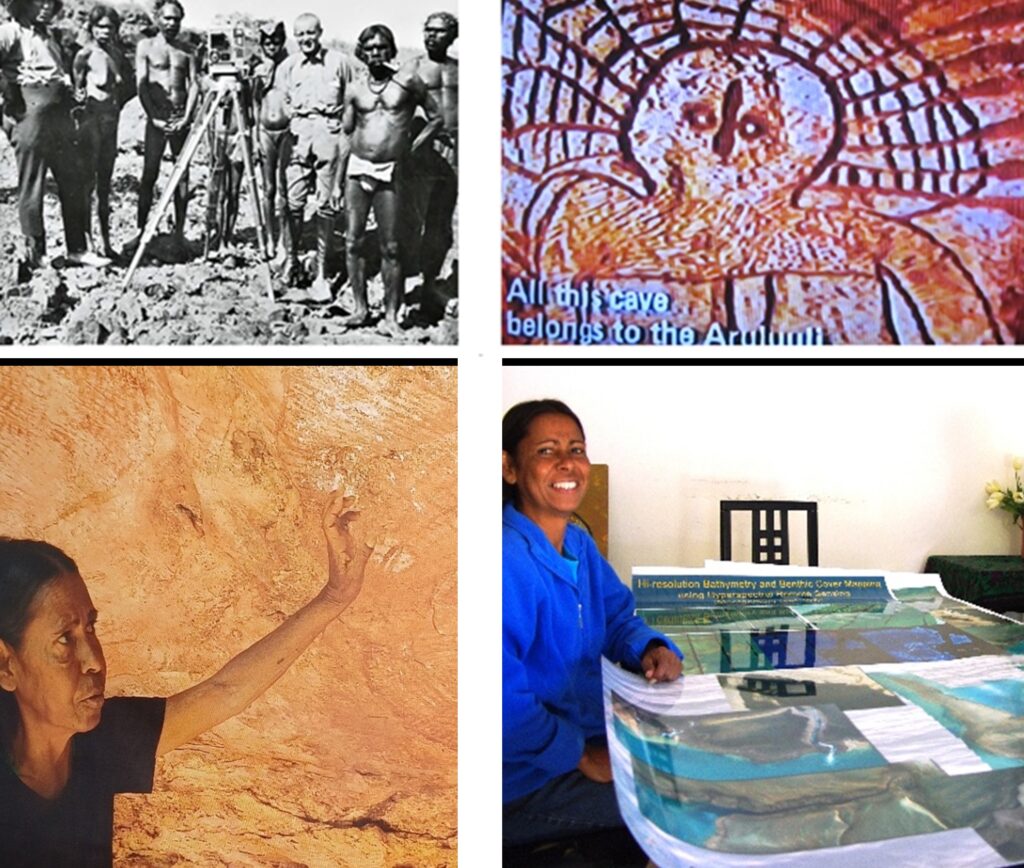
Through her mother’s father (pictured) Isobel was the last documented direct descendant of the Arraluli and Yowjabaia people. She has preserved the history of her clans in accordance with the histories, laws and customs of her traditional systems and in doing so preserved and shared the rich cultural and spiritual connections to the environmental and scientific values.
the Wurnan dambim system (sharing system) way back in history, of which the Arr’a’luli were members, and to which Isobel was endorsed as a munumburra (law man or woman) to ensure the

Yowjabai or Montgomery Islands and reef
continuance of the wurnan system and proper dambims, keeping the songlines of exchange and wunguud (life force energy) in proper order in her saltwater country, and an area of utmost importance in her peoples’ creation stories as a birthplace of so much life including the charismatic mundumbun, and many of the same values noted for by scientists and environmentalists, conservationists and tourists today as some of the world’s last intact tropical marine and terrestrial ecosystems.
Isobel founded this Arraluli Whale Sanctuary Project to gain awareness for the values of her country and biological life that is a part of it, and how it is tied to law and culture, marine and land, dreamtime and now. She used tribal knowledge passed to her to guide scientists in their amazing discoveries., and government, NGO and industry in their approach to use and management.
This was at a time when she was engaged in overturning many administrative injustices, that were leading to decreased protection of her cultural and wilderness values, through maladministration of her own rights including administrative errors disappearing her genealogy from the decision-making matrix. Both her and the Country had no voice for themselves, and she decided to speak up.
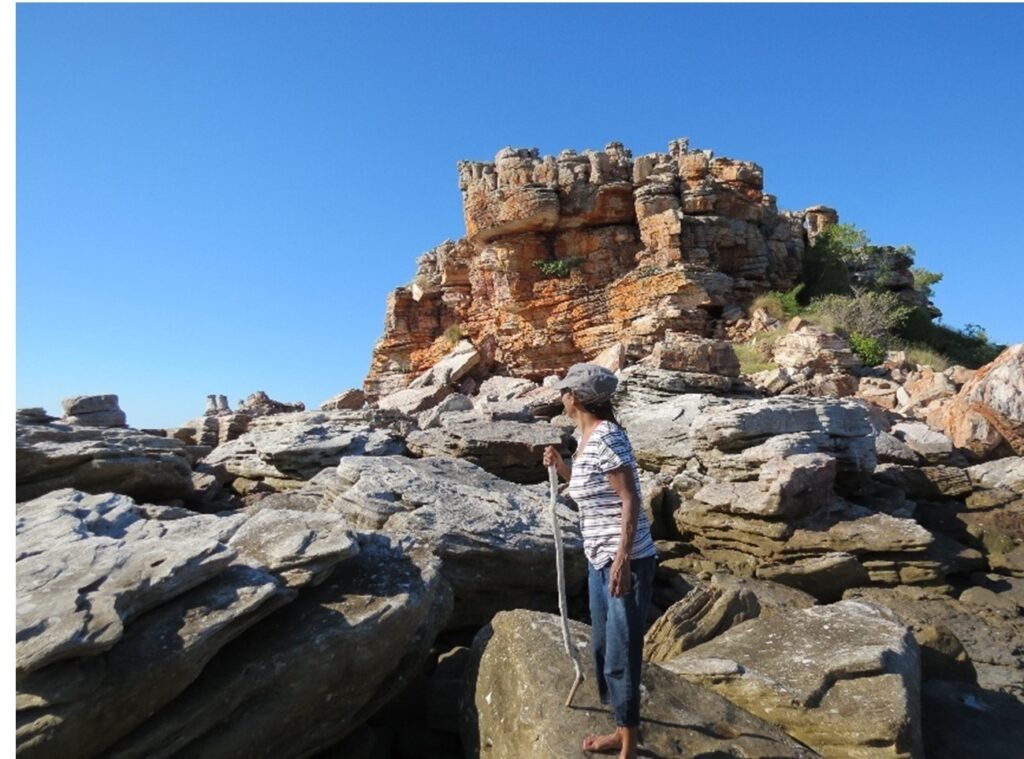
Issy at Bibi ai on Lunguworro, a famous Lalai (dreamtime) and historical place for her clan, tribe and whales.
This spark helped form the first marine park for the Kimberley, and the promise of protection for the whales and other life that rely so heavily for their life cycle on her Country. In synchronicity she removed the shackles that had been placed on her by others and stepped forward back to Country, ensuring heritage and cultural and wilderness values would not be ruined or distorted – which is one of the major responsibilities on Traditional Owners.
As Issy would say, “we belong to the country.” She believed, in accordance with her tribal beliefs, that she, like her whales and other many wunguud animals and flora, came from the blueprint of life left by the creation spirits, the Wandjinas, and the big ‘mothers of all’ humans, Jillinya.
Isobel’s tribe never ate whales and one of the key stories is the punishment of humans for spearing them. The site that records this, is one of the most productive areas in the marine ecosystem and a regular place of use by mother and baby whales during the birthing season. In simple language, it is the epicentre of the western humpacks’ annual migration, where the life cycle starts, finishes and rebirths again. Issy preserved this knowledge from her people to share with all and in doing so guided marine scientists led by the late Dr Steve Blake to confirm the hyper-scientific values.
As she illustrated in her TV and print interviews, this web page, hundreds of talks with groups on Country, in courts and mediations, and in the book Luli People she co-authored with her husband and partner Peter, her clan had been documenting the behaviour of whales in this area of Australia for millenia. Songs, paintings, carvings, stories, and the markers left in the land and waters themselves from the primordial creation time, the Lalai, and in the histories of ancestors and humans, Issy’s mob.
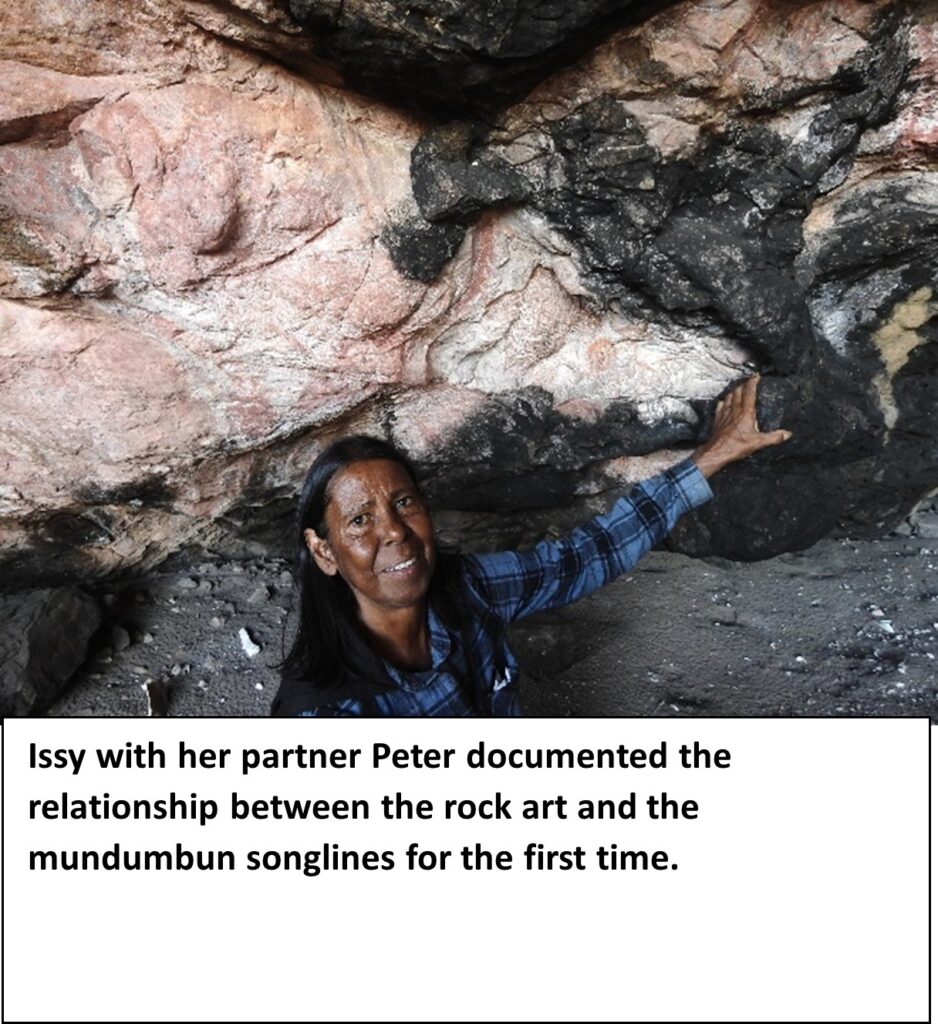
Due to her passion, advocacy and ability to get others to work with her and see her vision, and knowledge, she left her country physically more secure and protected than it would have been had she not stood up, including through participation in forming the marine park, national heritage assessment, working with marine scientists and significant heritage projects around her clan’s occupation.
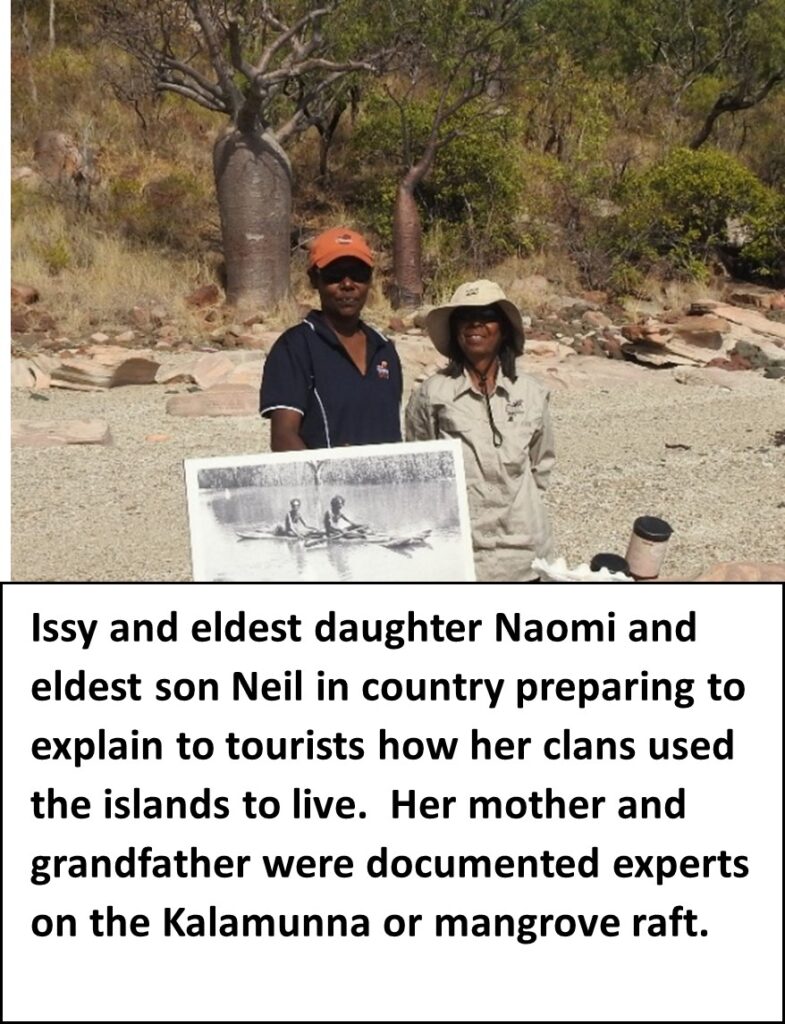
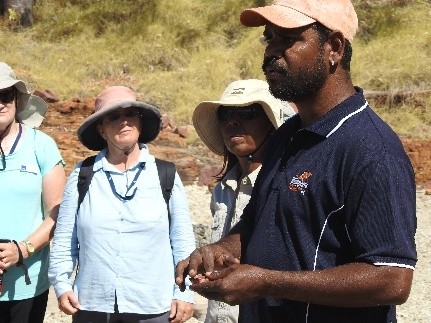
She took her responsibility as the ‘last of the Luli’ seriously, especially her custodianship of the whale song and protection of Yowjabai – including preservation of the story and paintings of Yowjabai in her clan areas – the story which had been in danger of being lost. Through her paternal great grandmother, Isobel (and now her children) is the last documented direct descendant of the Yowjabaia people, and it was her decision to share the reef with the marine park to help protect it for all, especially the nature and animals.
In the last decade again following the path left by her elders through the ‘bush university’ project, and with a $20,000 loan and some support from Tourism WA and Dambimangari Aboriginal Corporation, she started a successful tourism business with her children and close tribal relations.
The venture has grown to providing opportunity and benefit to her family, tribe, local community and State, most significantly having her children back in Country on land looking after those places and speaking up as a demonstration of Australia’s aspirations to reconcile and ‘close the gap’.
Issy was raised by the Boss Old People, and never forgot it, and with her close tribe and senior women like Chloe Nulgit still obeying the wurnan, kept a track on the descendants of the three tribes, a living history of her people, urging and cautioning those in this time with the words echoed from her elder mum Daisy of the Gralya clan: ‘Don’t go around the edges.’
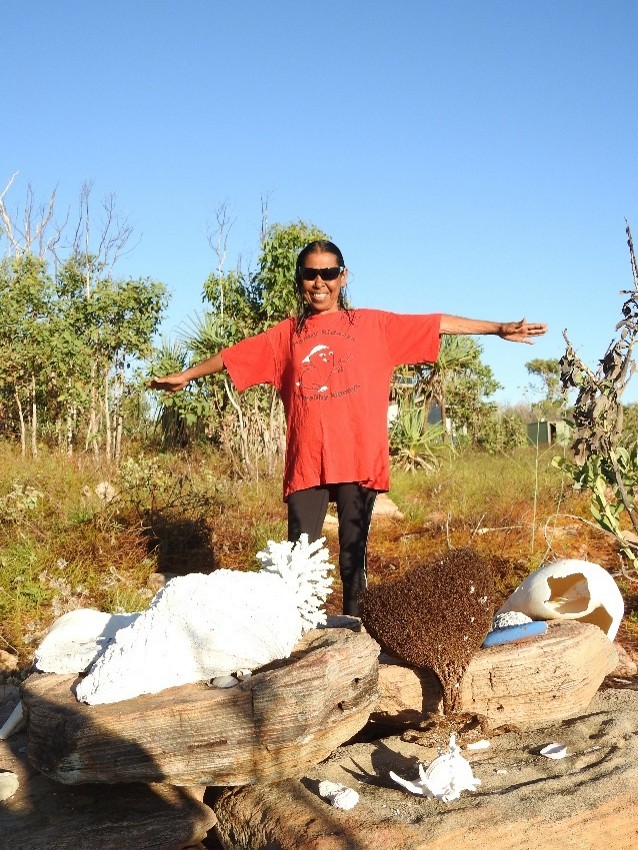
Issy remained active despite many serious morbidities and came alive in country. She loved to talk about the study done on her mum and old women which showed in her words they ‘were made up of the reef.’
Despite having several terminal morbidities, Issy led her family back to Country, following the ‘wurnan’ (sharing system) laid down by her old people, making sure that right people right country, the foundation of the dambim system, continued and guided return and management of country in this day and age. Such was Issy’s lifeforce most people who met her during this time did not know she had serious illnesses. If the number of days she was debilitated through this illness counted – her achievements are even more remarkable. This includes several recoveries to continue living that as far as we are aware, were a first in the medical world – something that may surprise others but not those who knew her and the healing power of Country for its own.
Isobel was a remarkable woman, human being, mother, and member of her clan, tribe and planet. She growled her mob but loved them too, and praised and hoped for them. To the end she also lamented the damage that had been caused to hers and other mobs in Australia – but didn’t want it to be an excuse to give up or for others to speak over her and her land. The many people she met in life or came to see her in Country, were all touched by her.
The tributes and condolences that have come in for Issy all have a consistent theme, that she was unique, special, loved, and inspired many who met or knew of her in some way her special nature and just by being here in this time, doing what she was doing, being herself – a sole surviving female matriarch of a clan estate trying to keep her house in order as her people had done since entrusted to do so from the Lalai (Dreamtime).
For all who knew Issy, including the whales that came to see her each year, the world is a sadder place, but better for her being here as long as she was, and we thank her for that, as it took huge strength, and some great support from her doctors, who she spoke to many of last year, thanking and growling and telling them she was ‘ready to go. In a bedside manner they all knew too well, and both loved and feared.
Her last year gathering her family and relations around her in country was one final effort that we all see now, that had her in control, the driver’s seat, as she always was, mother and matriarch, taking her own kalumba (road) home, and making sure her legacy would live on, preparing everybody for a life without her as she prepared herself to go on the next stage of her journey without us.
“When she decided to do something, she did it,” close friend, tribal sister and Ngarinyin matriarch Chloe Nulgit said.
“I don’t know anyone from our three tribes who has done what she did, going back to Country like that.” Issy and Chloe were a generation of dwindling elders taking on the time old role of their mothers and fathers.
“We were there for everybody and we’d tell our children and other peoples’ children, what we were taught, how we grew up, that wurnan we knew, how it was practised for me and her growing up, and we tried to make it work for this day and age telling stories to any and everybody’s children.” Chloe said.
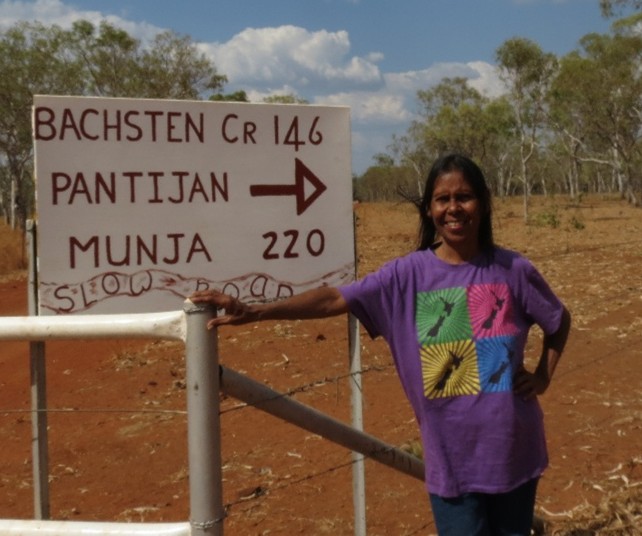
Following the steps of her ancestors and
creators, Isobel knew her stories and
travelled to freshwater country for the big
meetings of the three tribes.
According to tribe relation and community leader Rowena Mouda, Isobel’s fearless attitude supported that it’s OK to speak up, ‘even if it got me in trouble.’
People who lived and worked alongside Issy saw first-hand what that trouble could be. And despite its insidious and often bizarre nature, she always kept her spirits up and her laughter driving her team and family forward, while never abandoning her resolve It has been asked to be noted that the conflict and struggle she experienced were not confined to the political and legal domains, wrongly imposed and offensive misapplications of Australian or Traditional law. It also involved a small family operating in remote harsh country off the grid, dealing with threats, hostile trespassers, arsons and damage to equipment, to name a few unsavoury incidents over the years. Despite these hardships, Issy never lost that sparkle in her eyes, that wonderful energy that was so attractive, her will to get up, overcome, and her willingness to forgive, but not forget, to educate and work with people to make her country and by default, the world, a better place. She did that and more until the end, preferring to concentrate on the good people she had surrounded herself and her family with.
Issy’s last legacy projects included the work with team from the Centre for Biodiversity and Heritage (CABAH) on the occupation of her family in the Luli dambim, where she formed a strong working relationship and personal friendship with academics including Bert Roberts and Zenobia Jacobs. This work gave Issy and her family time to interact with the older and newer generation of archaeologists, and share knowledge, and ensure protections of her family’s cultural heritage.
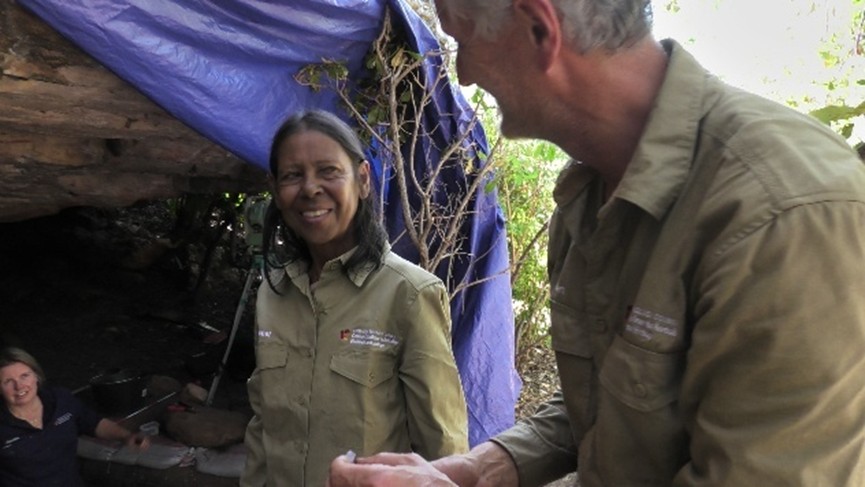
Issy with Bert and Zenobia building the science picture of her peoples’ occupation in her country. Issy was always keenly interested in what scientists wanted to achieve, how they did it and how it could benefit understanding and protection of her country’s values, and often saw the views of scientists as ‘pretty much what our old people was telling us, or what?’
“We will always remember Issy with great affection and admiration for her indomitable fighting spirit, her cheeky sense of humour and bright smile, and her warm welcome to us onto Arraluli country. Issy might have been small in stature, but her formidable and resolute character was something else to behold. Issy remains very special in our memories and we will miss her enormously, she was a truly remarkable soul,’ wrote Bert and Zenobia upon hearing of Issy’s passing.
The photos of whales accompanying this story are of the last visit in country with Issy, seeing the migration and births and nurturing in the ‘maternity ward’ that her traditional country is known for. Most shots were taken from the balcony of her beloved shack where she was largely confined to in her last days, and her sacred clan beach looking out on the mundumbun jungura wungud. These images capture the essence of the matrix that the life from smallest biota to birthing humpbacks, are markers and part of.
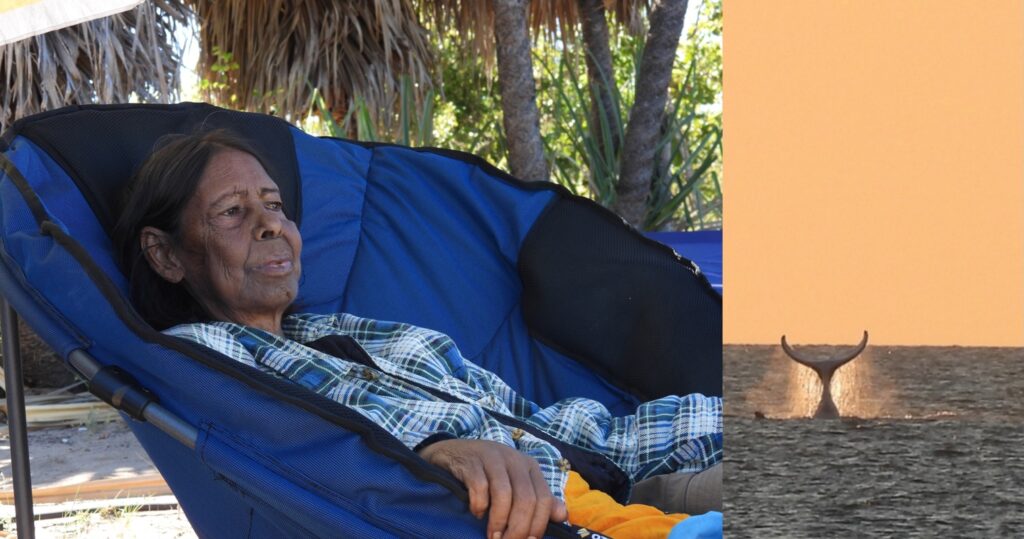
Issy enjoyed watching this family sail off into the sunset. The fluking of the tail generally signals the disappearance of the whales from the surface. And so we have said goodbye to Isobel.
In her final year, with her eldest son Neil and eldest daughter Naomi, she commissioned recording for history the carved boab trees that are part of one of her most sacred and powerful creation and wunguud sites, including being a key part of the whale songline. This is part of a project lead by Dr Sue O’Connor, who has also led archaeological dating in Issy’s clan country in the past, which has led to its dating so far as 55,000 years, making it one of the oldest dated human occupation sites in Australia. More of the findings from Issy’s work with the archaeologists will be shared in the future. On hearing of Issy’s passing Sue said: “I would like to say Issy was an inspiration to me and to everyone who met her. She was strong in her vision and her commitment to be in country, to experience the life cycle of the whales as they travel through and breed in Arraluli waters each year, and know the Wijingarra families, living around the cove. I know that many people will miss her knowledge and her generosity in sharing it with others. I was one of the lucky researchers that experienced her hospitality and welcome on Country, and I am deeply grateful.”
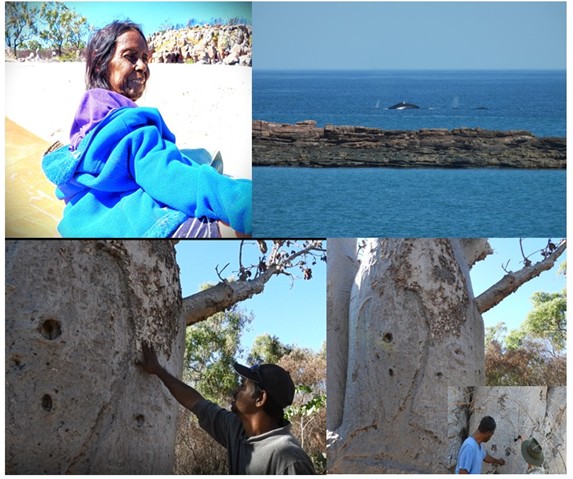
In 2024 Issy agreed to participate in a wider project and commissioned recording of the
carved boab trees in her area, trees that are part of one of her most sacred and powerful
creation and wunguud sites, including the whale creation songline, and that were
damaged by fire last year just prior to the recording.
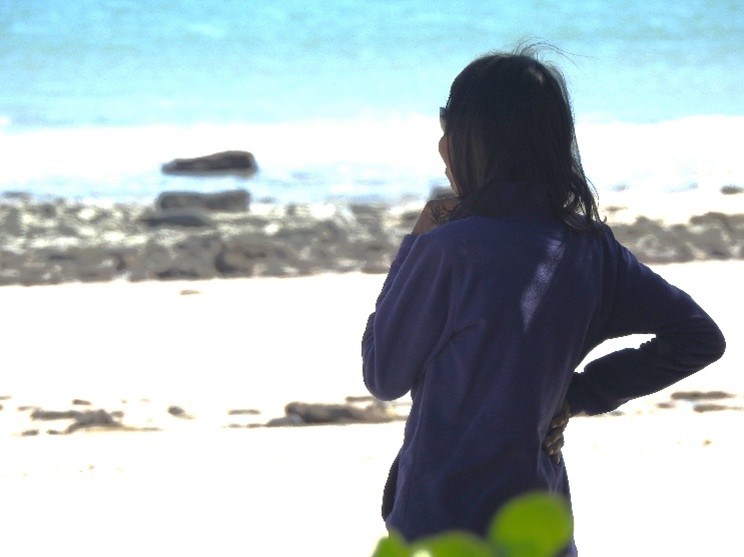
We also show here a poignant video in country of an old adult whale coming home to die in Luli a few hundred metres from Issy’s shack, showing how connected Isobel’s human and animal families were, and how being in country is the completion of that bridge.
“It has been amazing working with Issy. Had she not been here, many good things people take for granted now would not be as they are. It often feltthat rather than celebrating and supporting, some determined people made a big deal about this as she asked for some very basic things, mostly things that were her legal rights. I don’t think she asked for much, and anyone who reckoned she did, I have no doubt was corrupt or just didn’t fancy someone like her having the things she was born with. Those of us who remain and were Issy’s peers and worked with her, will work to preserve and continue her legacy,” Peter Collins said.
We thank the people who worked with and supported Isobel and her family and this project through the years. We might not have been big in numbers, but like our matriarch, our integrity and our falling on the right side of history (as opposed to the wrong side) is not unnoticed and means a lot. Under the Aboriginal law of Isobel’s country, when truth is removed from the law and the histories, bad things happen until they are straightened up again.
Isobel wanted us to thank the DAC, Lalang-Garram Marine Park JMB, staff from Tourism WA, NIAA and other agencies, and companies and members of the tourism industry that have worked with her over the past years, especially those who listened to her when she told them of her views and how she wanted things to be done for all parties to get the best result, and that respected this and in doing so, jointly created her own text book return to country, and one of the premier, culturally significant Aboriginal tourism experiences in the Country, but most importantly, a place that her family including all the animals and life, can call home, for the benefit of all, now and into the future.
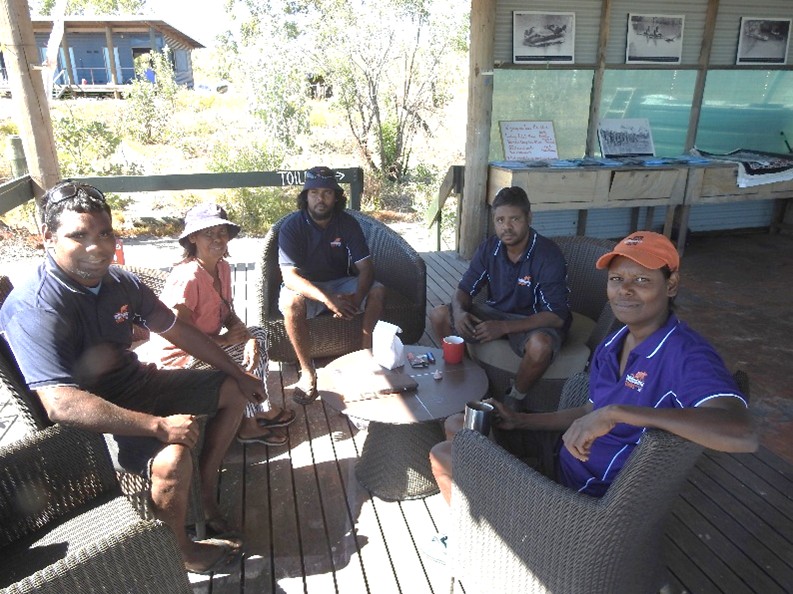
Issy with her children Naomi, Neil, Bart and YC in country
Issy’s clan (s) will continue in country led by eldest daughter Naomi and eldest son Neil, and her four other children Neala, Marvis, Bart and YC, and seven grandchildren, and supported by Worrora, Ngarinyin and Wunambul families and relations.
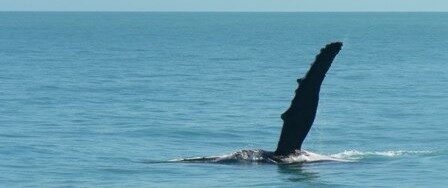











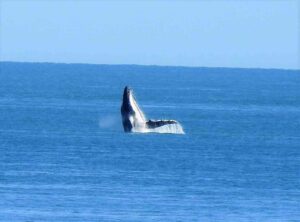
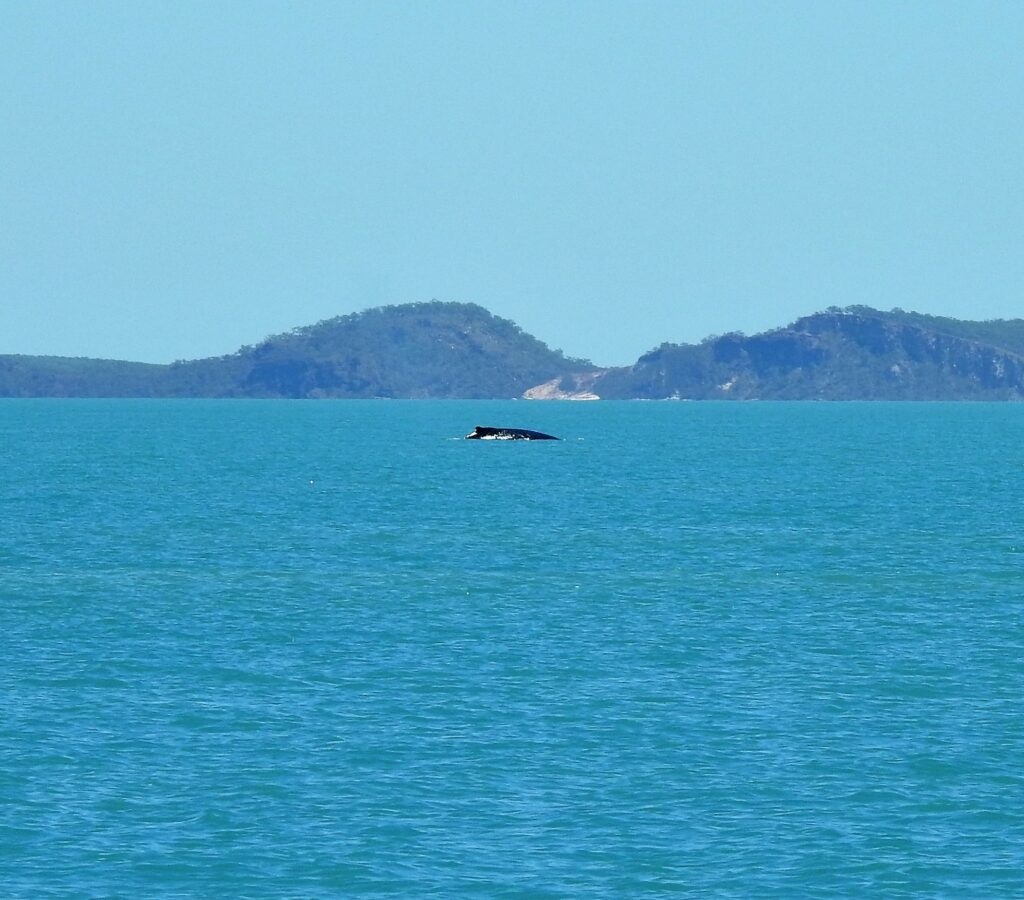
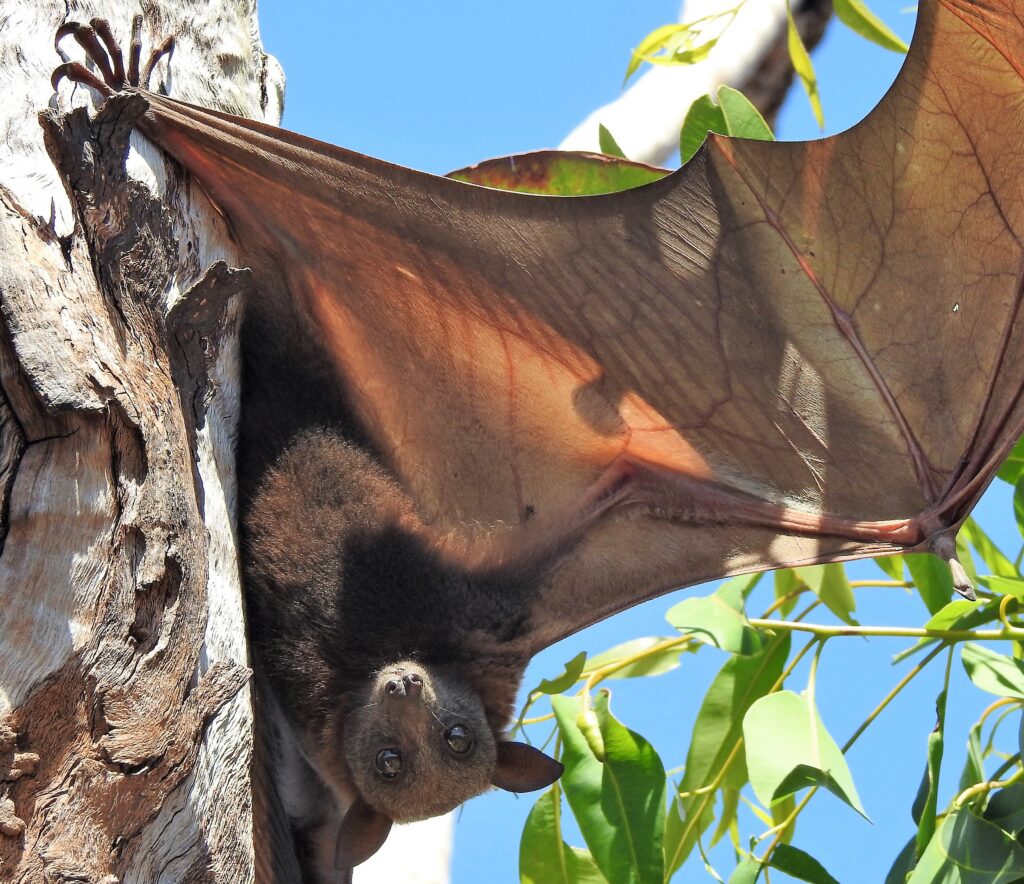
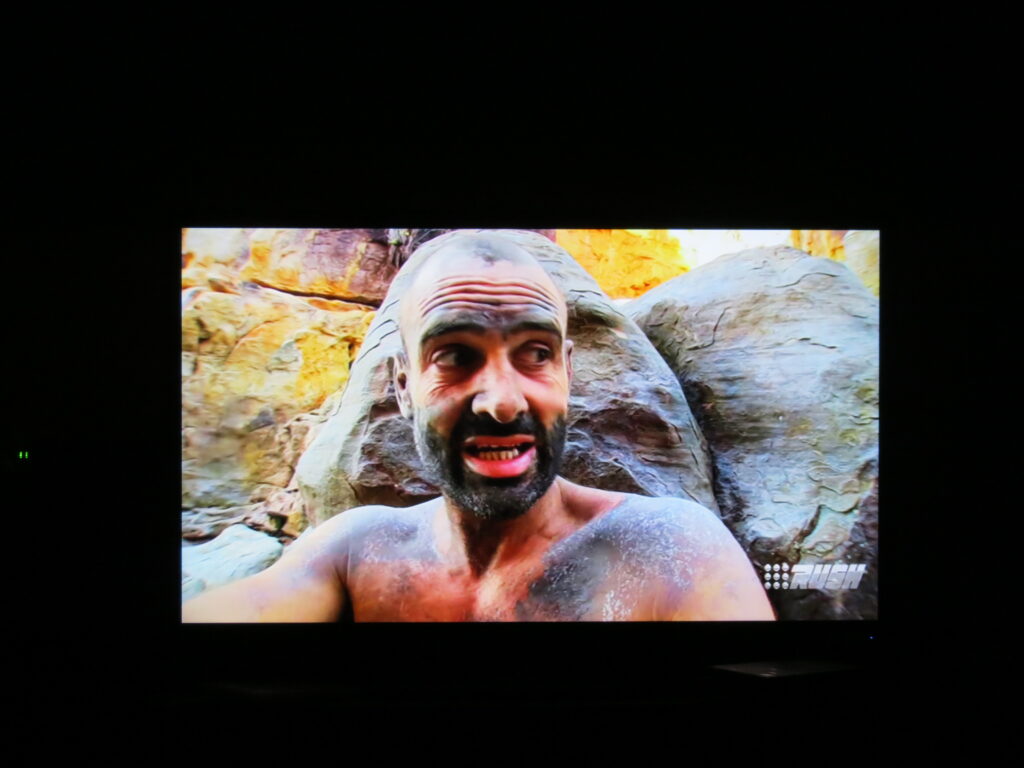
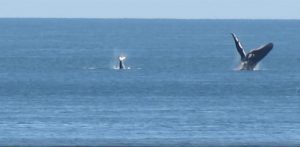
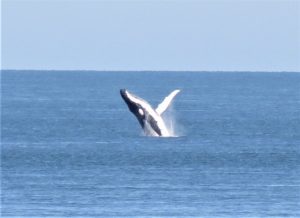
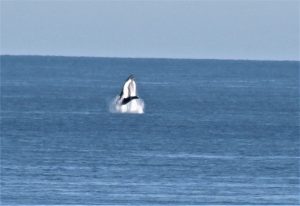
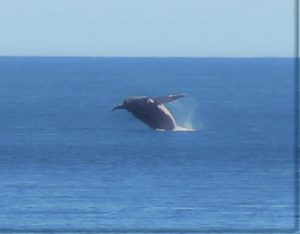
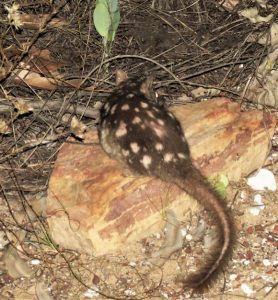
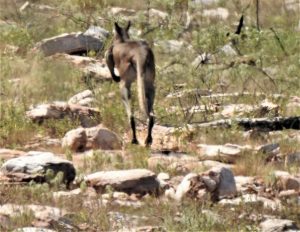
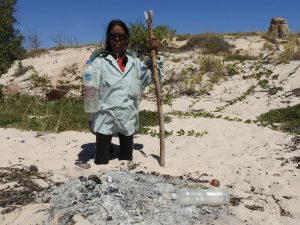
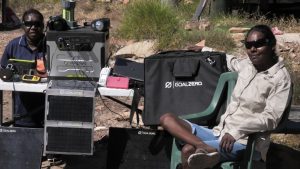
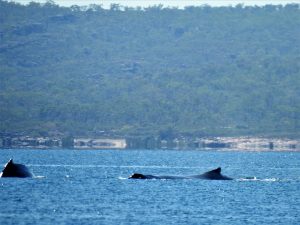
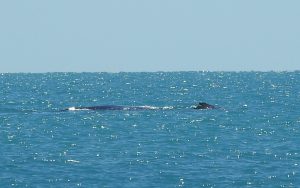
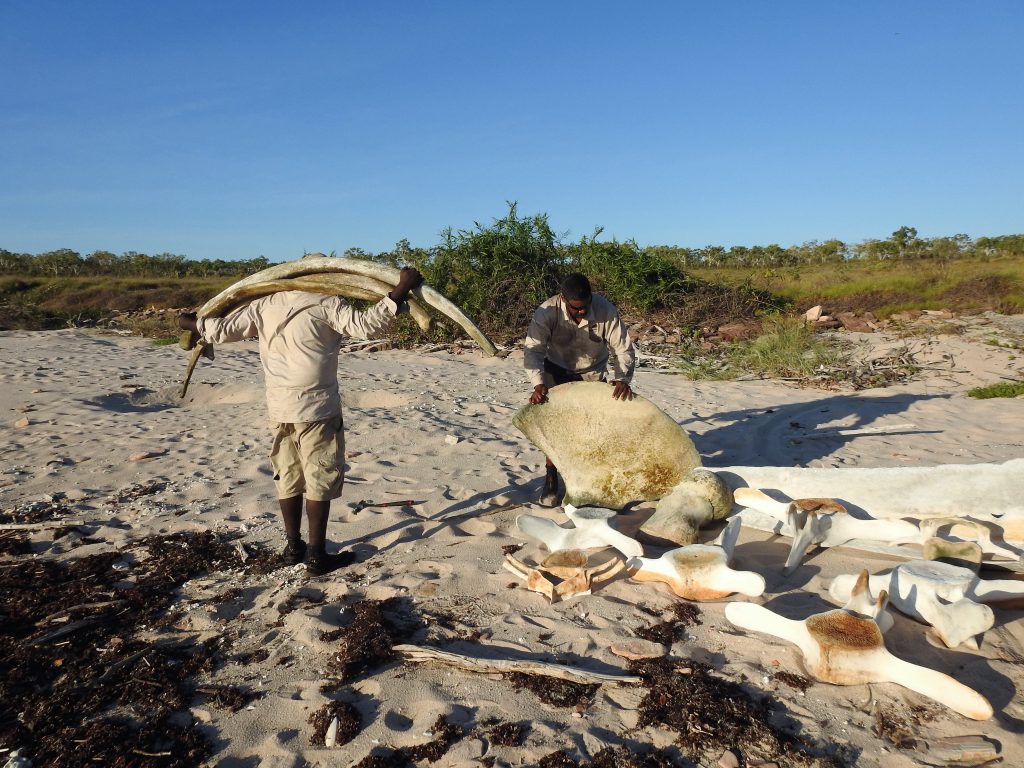
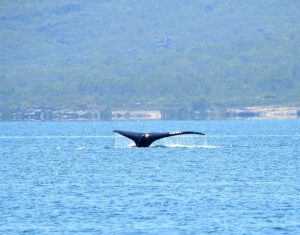
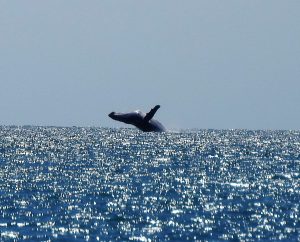
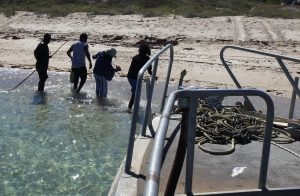
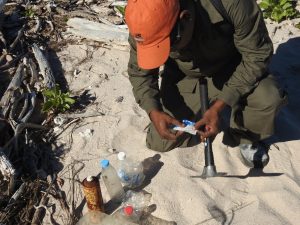
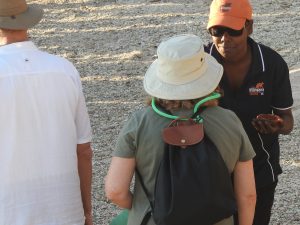
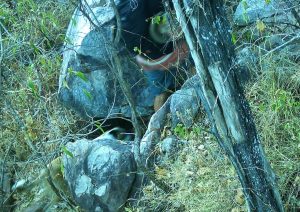
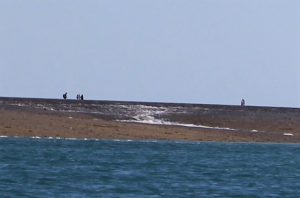
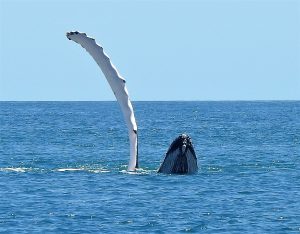
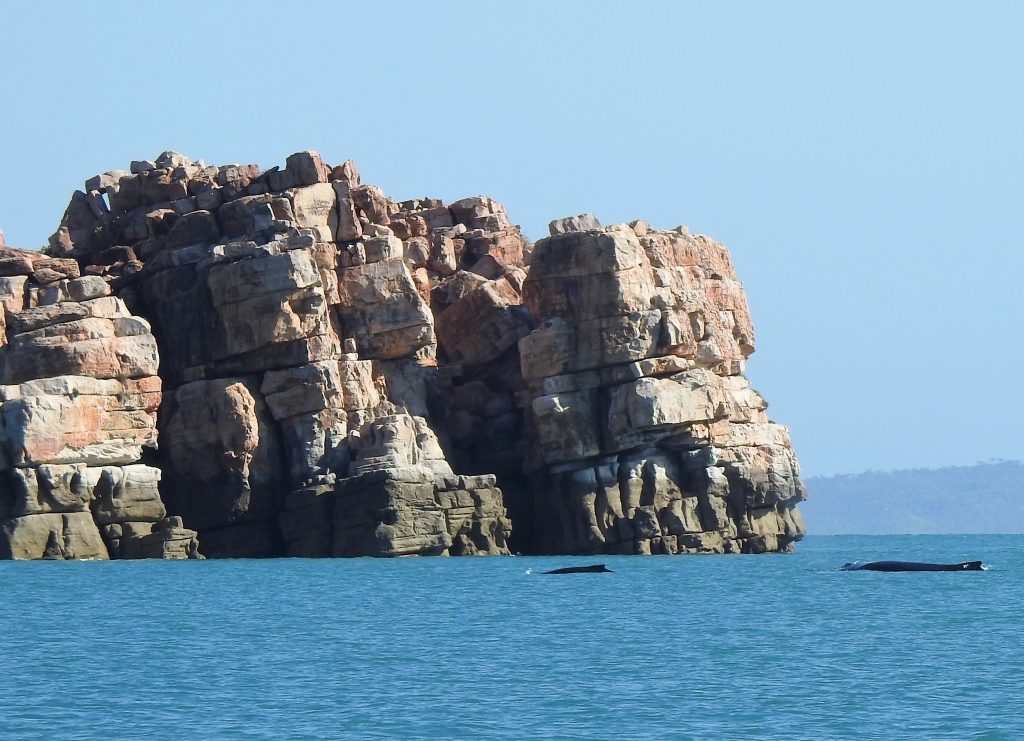
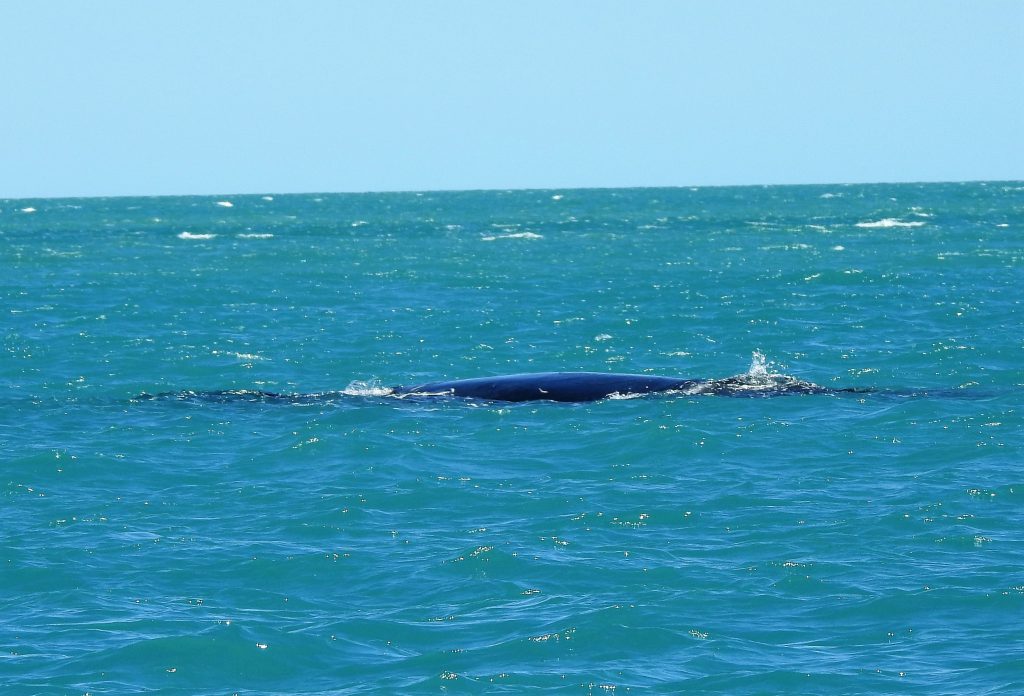
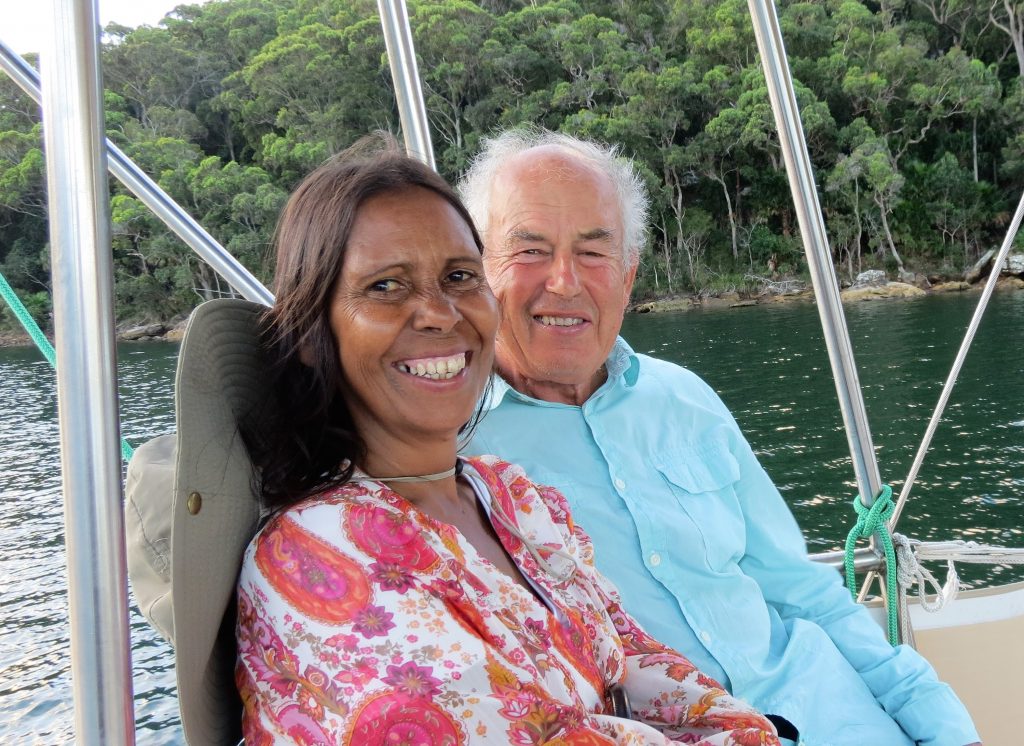
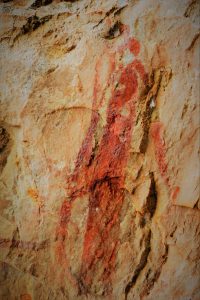
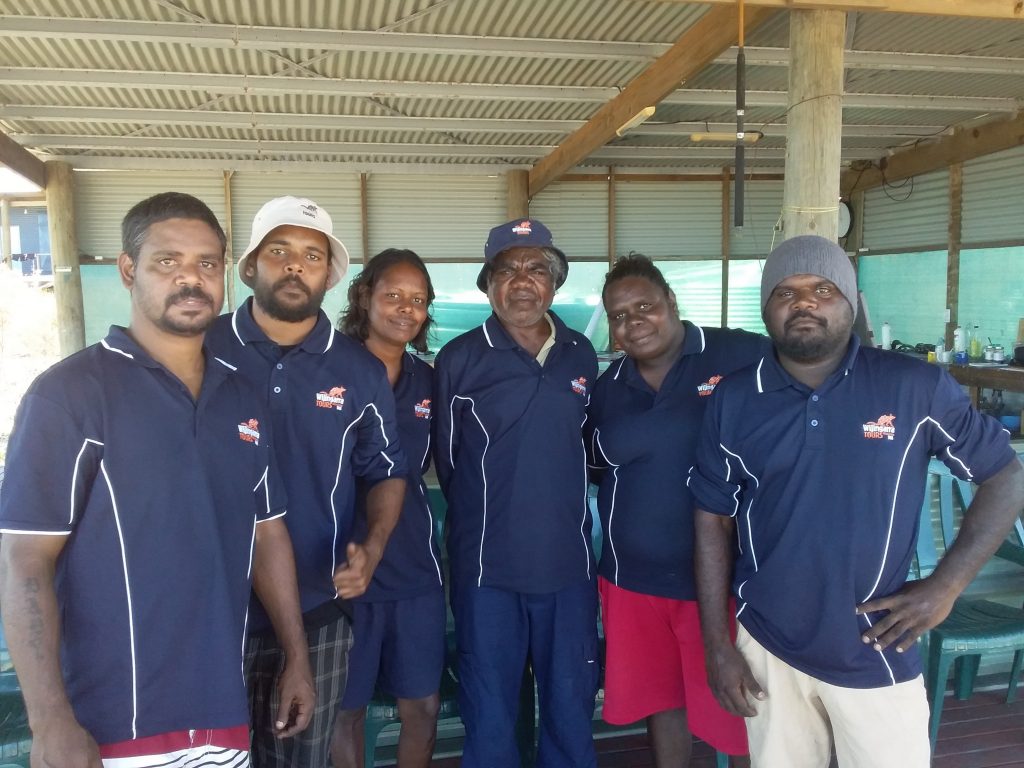
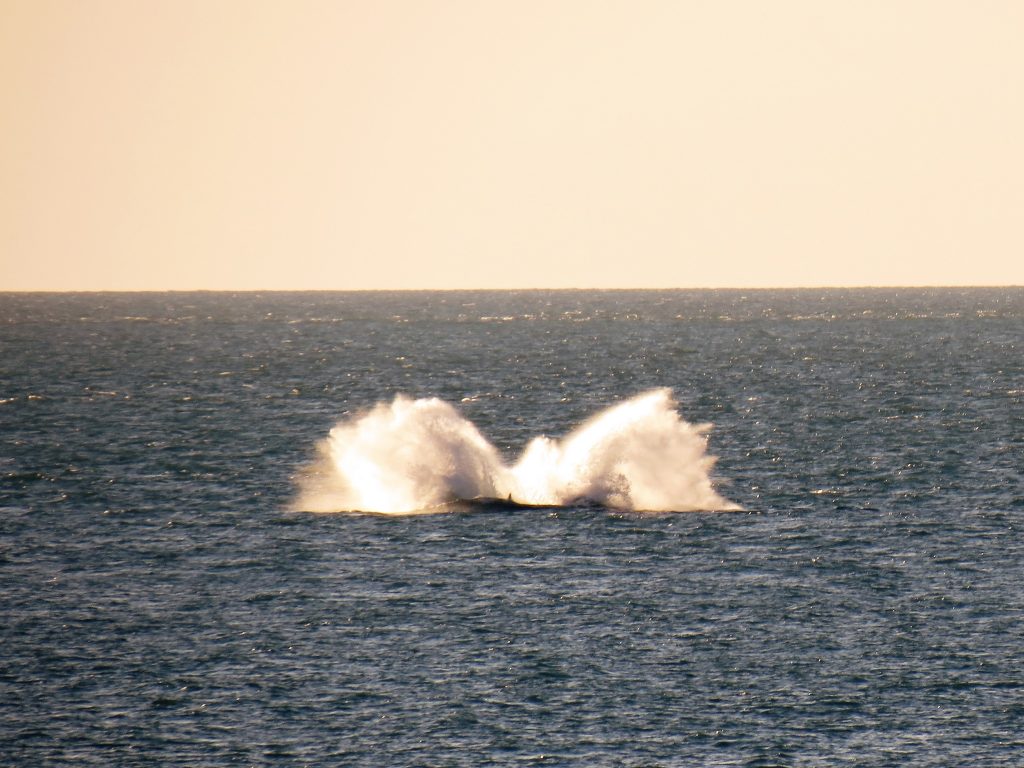
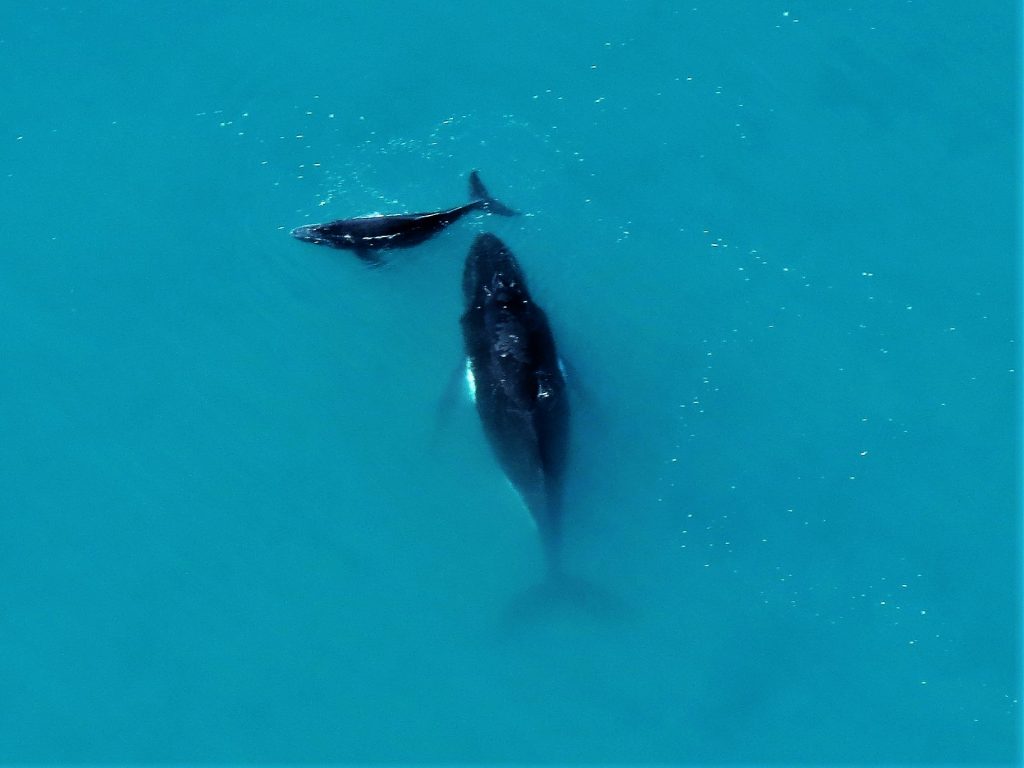
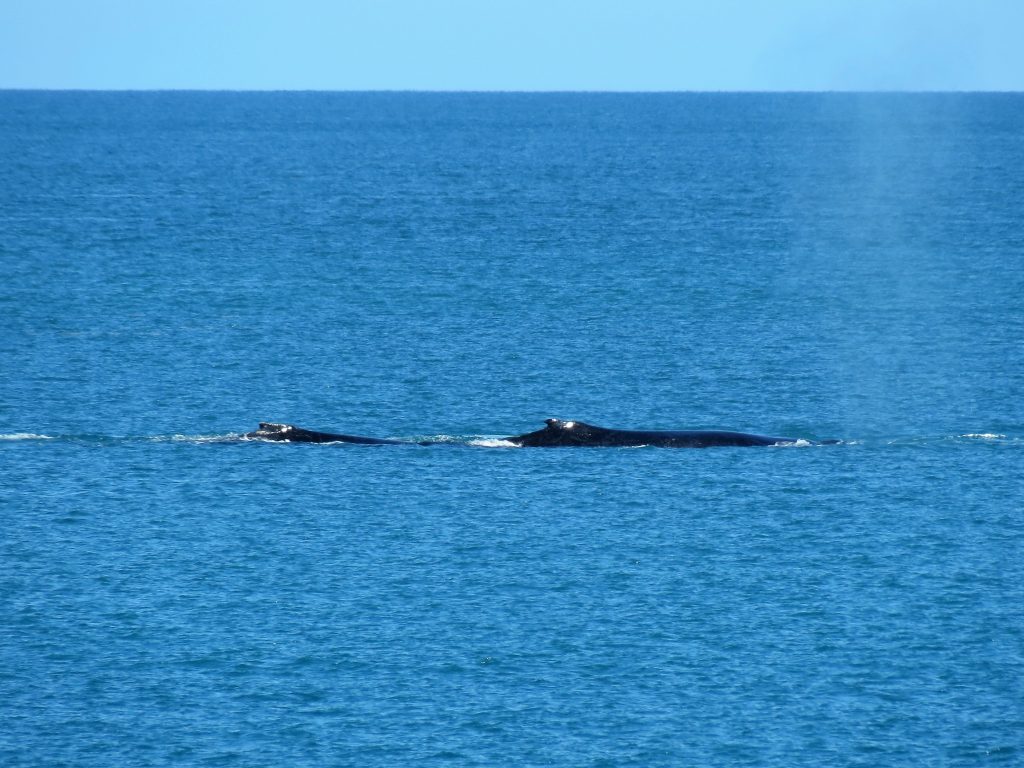
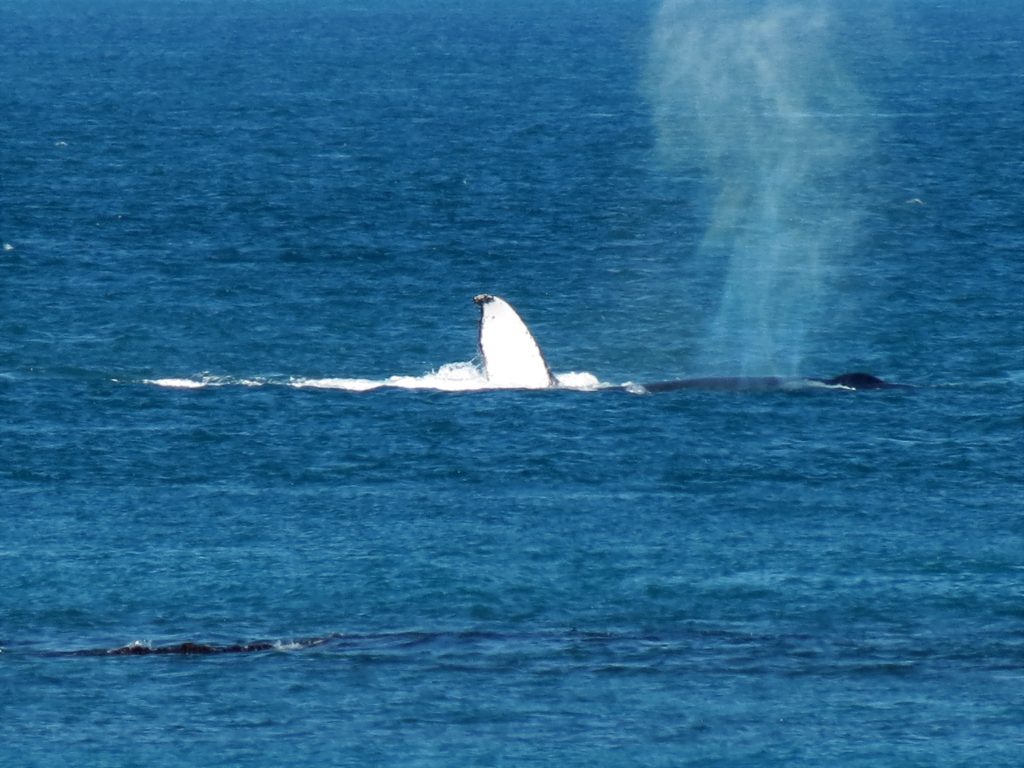
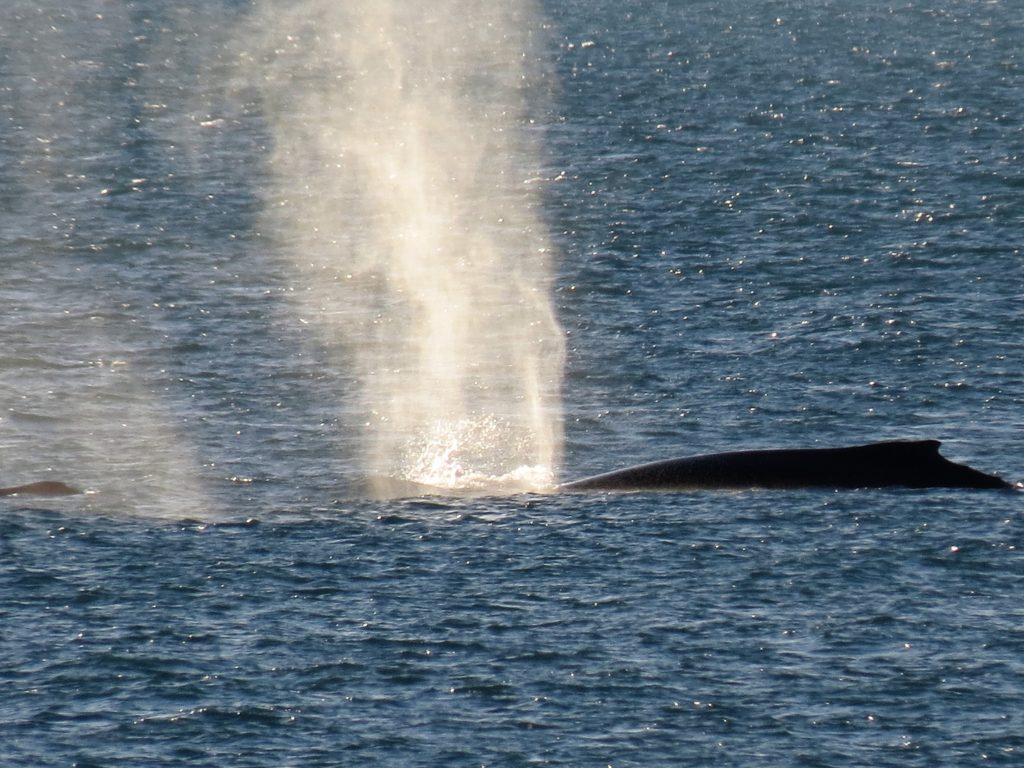
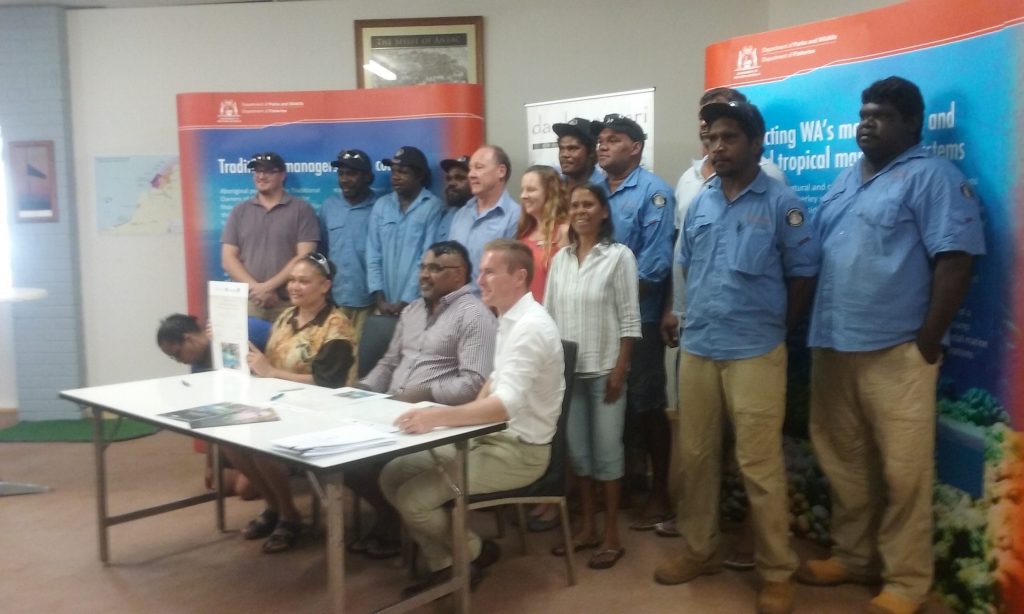
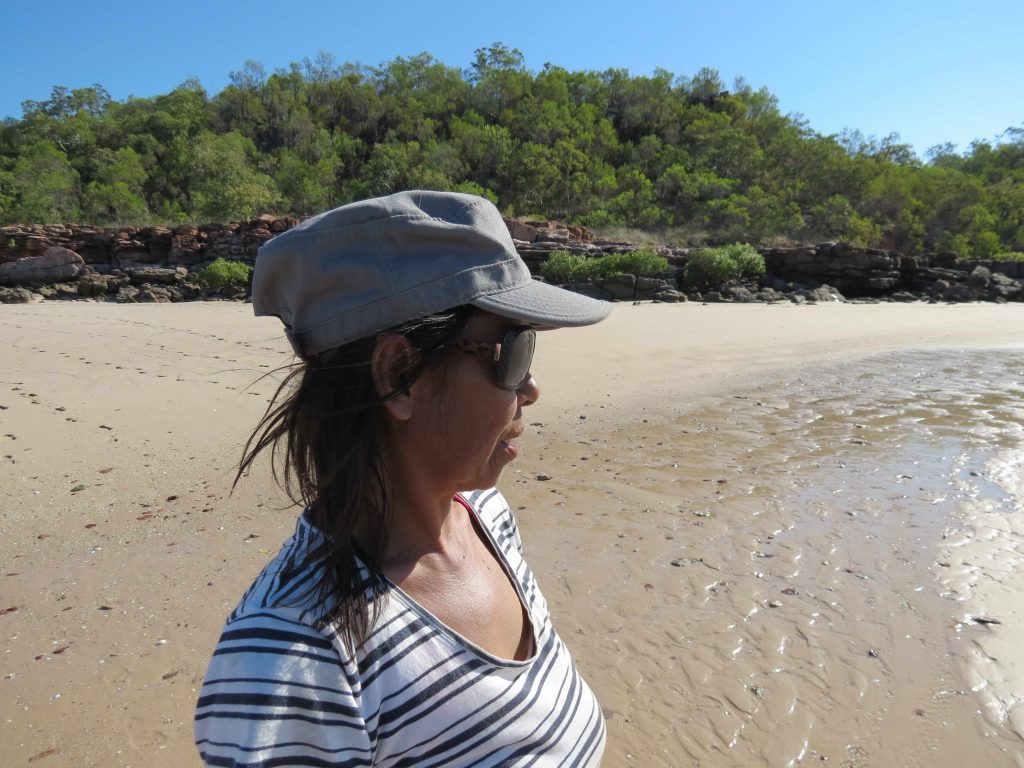
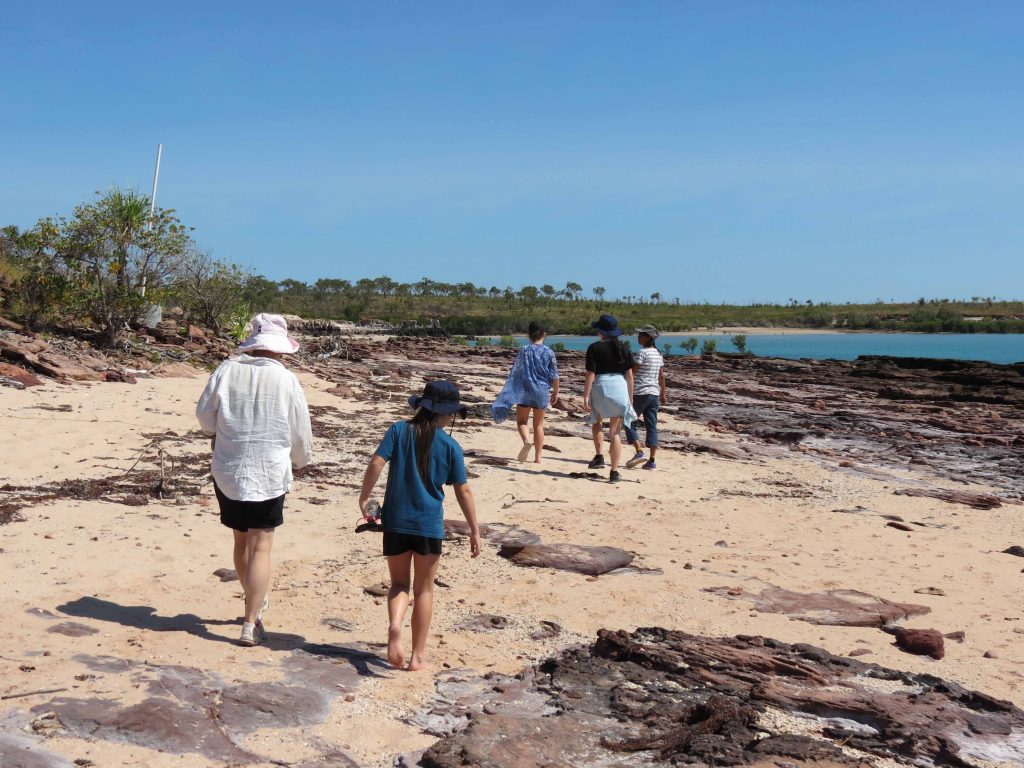
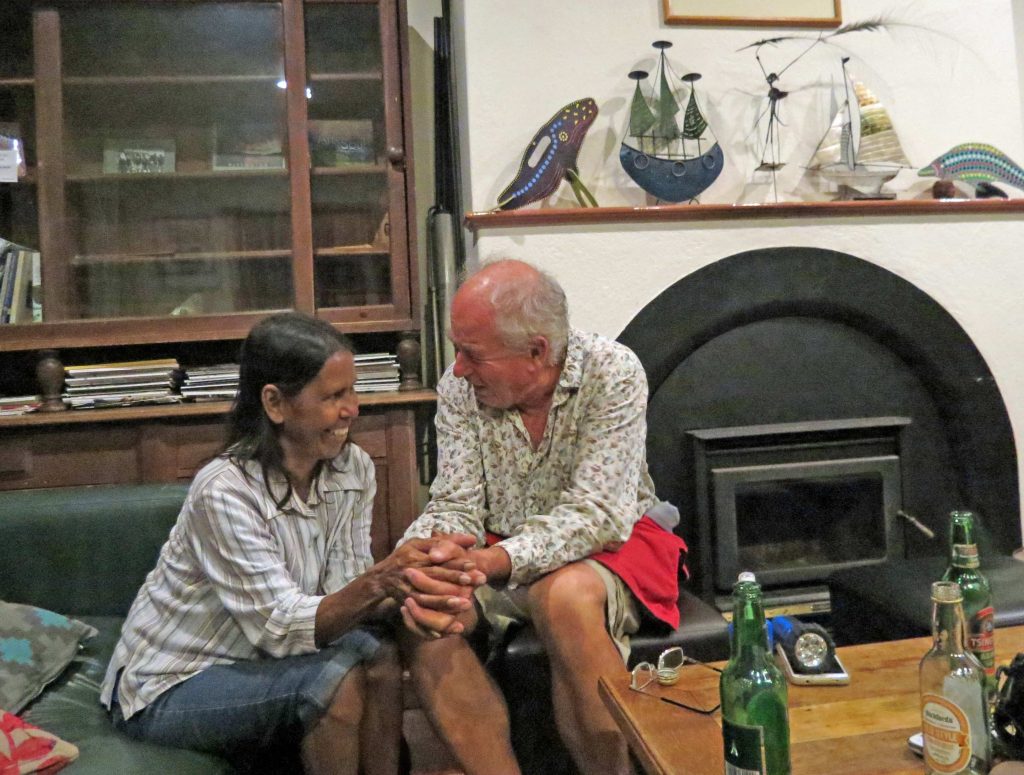
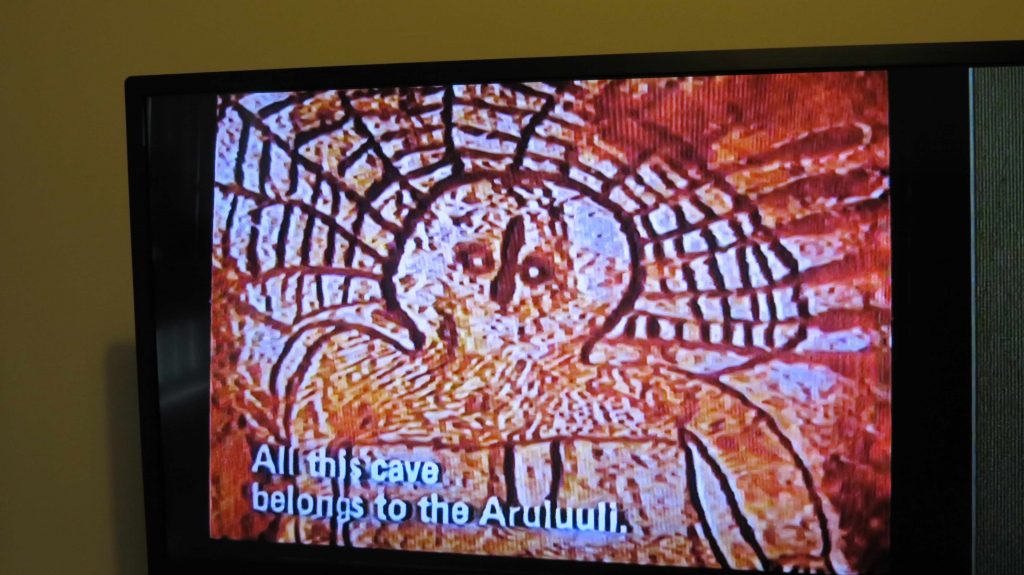
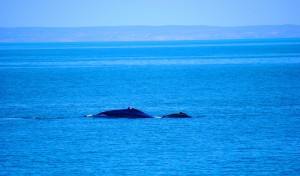 Each year new lives are born and created in our country. In the case of our well known migrating species the humpback, many come back and also, eventually, some never return. So too it is with our people. This country is where the whales are born and also where there spirits are caught by their parents. This is the way of all life in this country. As whales migrate to and from of our country each year, fulfilling the cycle of life, my peoples have their own journey across our country and sea.
Each year new lives are born and created in our country. In the case of our well known migrating species the humpback, many come back and also, eventually, some never return. So too it is with our people. This country is where the whales are born and also where there spirits are caught by their parents. This is the way of all life in this country. As whales migrate to and from of our country each year, fulfilling the cycle of life, my peoples have their own journey across our country and sea.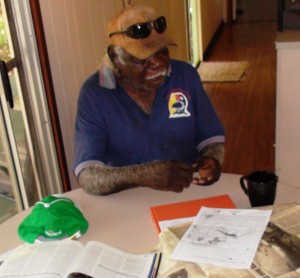
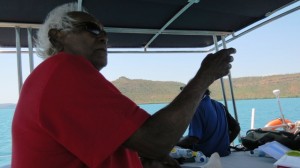
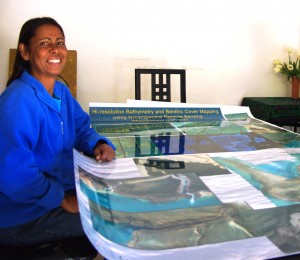 Followers of the Arraluli project will remember when Isobel went out with the film crew from Channel 7 Sunday Night at the time the whale breeding area had been ‘discovered’, and Roy sung on national TV a song about the mother and baby whale learning the first steps of life. What many would not know is that Roy had stepped in for Paddy at the last minute on that trip.
Followers of the Arraluli project will remember when Isobel went out with the film crew from Channel 7 Sunday Night at the time the whale breeding area had been ‘discovered’, and Roy sung on national TV a song about the mother and baby whale learning the first steps of life. What many would not know is that Roy had stepped in for Paddy at the last minute on that trip.